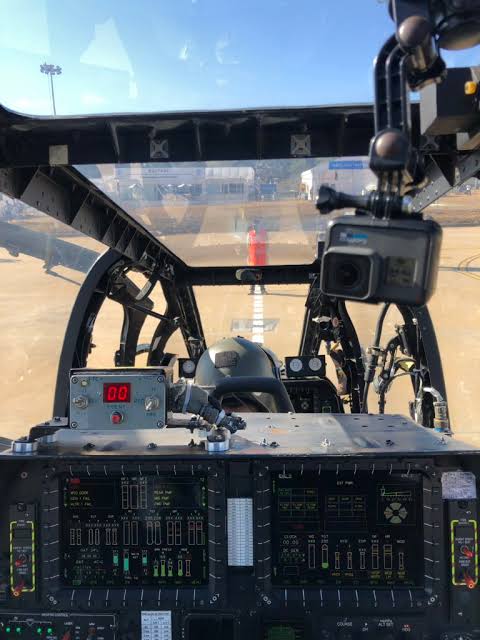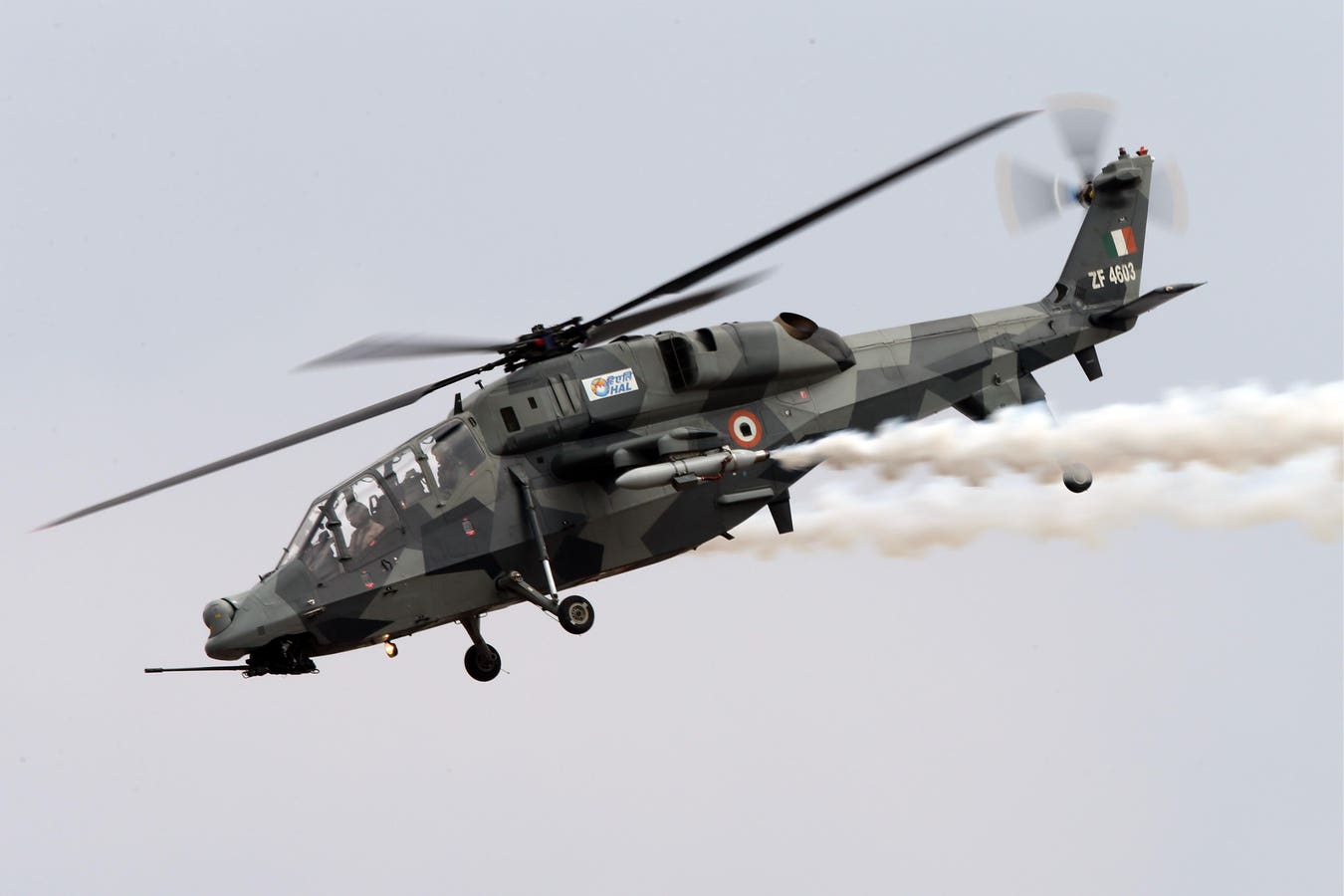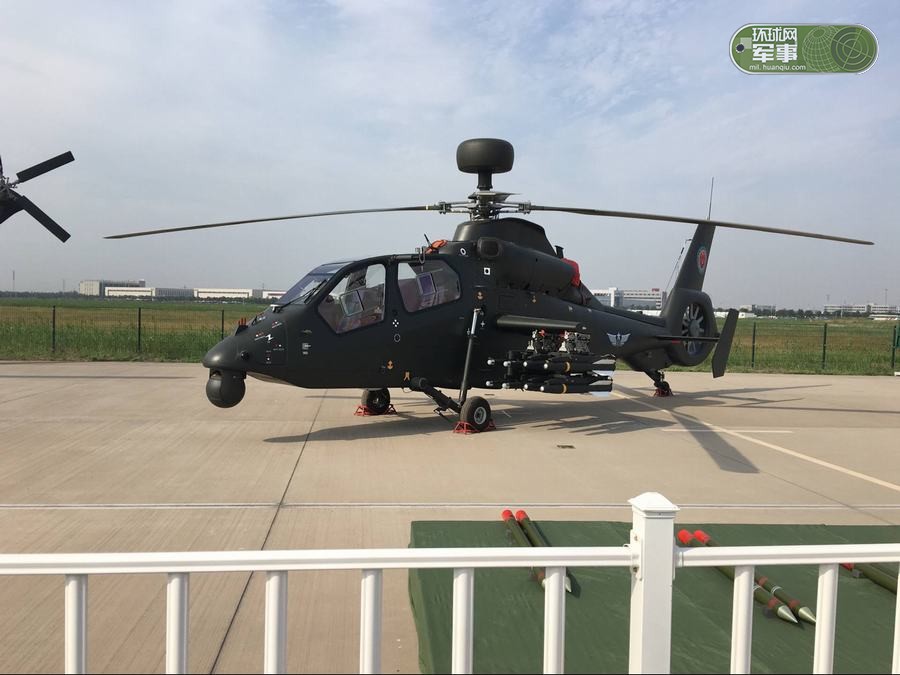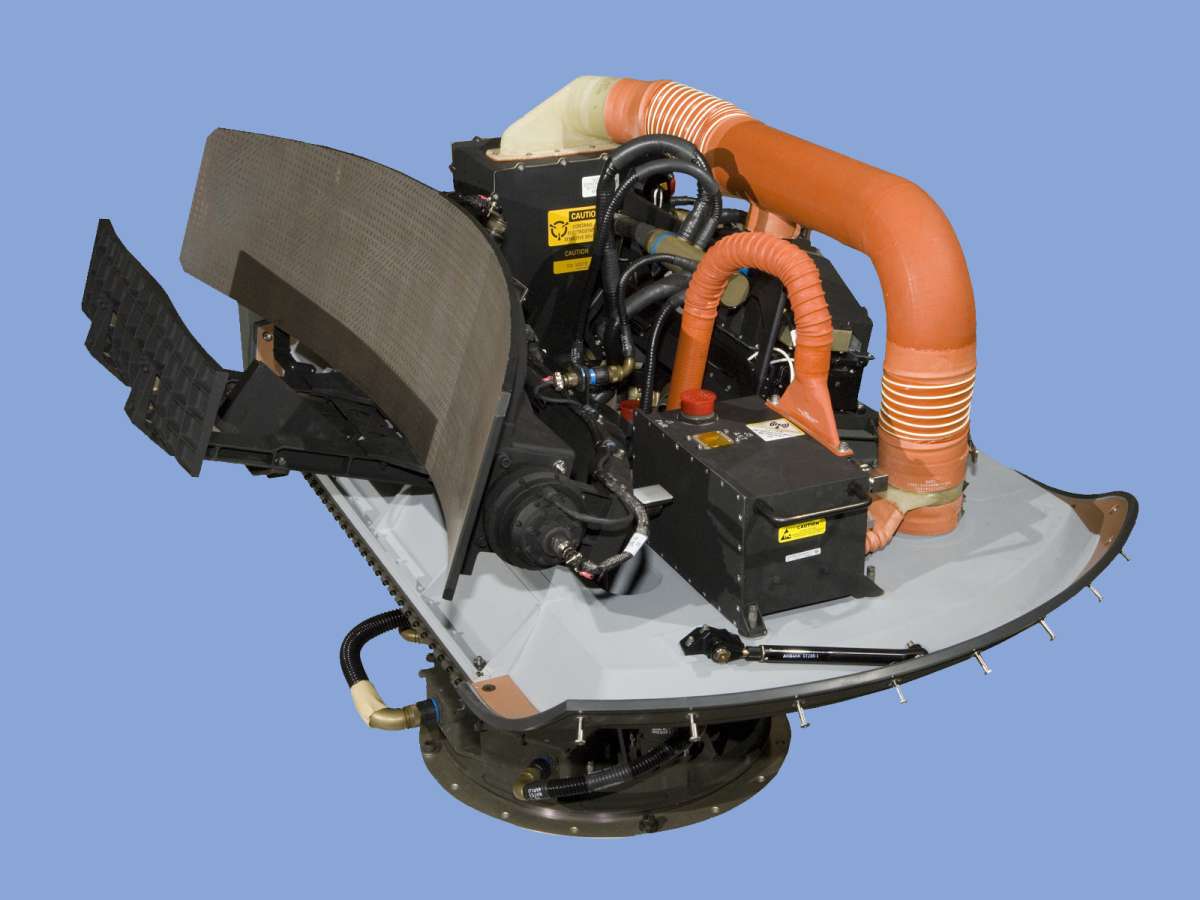What you talking about? Here is image for thatNo, he didn't focused on to it. No information can gather from that sweep.
Neither it is secretive nor classified.
What you talking about? Here is image for thatNo, he didn't focused on to it. No information can gather from that sweep.
Out of the two men, who controls the movement of the chin mounted canon ?What you talking about? Here is image for that

Neither it is secretive nor classified.
The weapon officer only provide targeting, all weapons are still fired by pilot.Out of the two men, who controls the movement of the chin mounted canon ?

 www.forbes.com
www.forbes.com

For Mountain War Against China, Is Indiaâs LCH Helicopter Superior To Americaâs AH-64E Apache?
India is deploying its LCH attack helicopters in the Himalayas, rather than its U.S-made Apaches.www.forbes.com
For Mountain War Against China, Is India’s LCH Helicopter Superior To America’s AH-64E Apache?
India has deployed attack helicopters to a disputed region in the Himalayan mountains.
But India isn’t sending its new U.S.-made AH-64E Apache s, arguably the most lethal attack helicopter in the world. Instead, India has dispatched an Indian-designed helicopter that the Indian military considers more suitable for operating at high altitudes.
Two Light Combat Helicopters, or LCH, have been dispatched to the Ladakh region, where Indian and Chinese troops engaged in border clashes in June. The Indian military has so far ordered 30 LCHs, from Indian aviation firm HAL.
“LCH is a potent weapon platform because of its state-of-the-art systems and highly accurate weapons that are capable of hitting any type of target by day or night,” said a HAL news release. “The other features of LCH include its ability to operate in the complete ‘Area of Responsibility’ (AOR) and altitudes. It has capability to carry adequate weapon load at high altitudes under varied conditions. All these characteristics make it most suitable for hot and high altitude operations.”
What’s interesting is that India has another attack helicopter: the U.S. AH-64E Apache, arguably the most advanced attack helicopter in the world. India recently took delivery of the last of 22 Apaches, part of a $3 billion deal signed in 2015 that also included 17 CH-47 Chinook helicopters (the Trump administration recently agreed to deliver another six AH-64Es).
The Apache is an impressive and combat-proven flying machine, with its Hellfire anti-tank missiles and Longbow fire control radar. The Indian AH-64E Guardian version features a more powerful engine, better data networking and improved composite rotor blades. Compared to the LCH, the Apache is faster, has more engine power and carries far more weapons, though the LCH has longer range (here’s a comparison between the LCH and the older AH-64D model).
However, high altitudes are challenging for rotary-wing aircraft. For example, U.S. Apache pilots operating over mountainous Afghanistan in 2002, flying as high as 12,500 feet above sea level and in temperatures ranging from 5 degrees to 122 degrees Fahrenheit, had to take extra precautions. “Performance planning was a critical part of each mission,” wrote one pilot. “Each mission required performance planning for altitudes, temperatures, and gross weights that were much higher than we normally operate.”
The Ladakh plateau of the Himalayan mountains, where China and India both claim territory, is 10,000 feet or more above sea level. For armored vehicles, the climate and terrain are so inhospitable that Indian tanks deployed there require special lubricants and must constantly run their engines to avoid freezing.
But the LCH has demonstrated an ability to operate in these conditions. In 2015, an LCH conducted several test landings on the Siachen glacier on Ladahk, at altitudes up to 15,800 feet while carrying a modest 500-kilogram (1,102 pound) load.
While the AH-64E can fly at altitudes up to 20,000 feet, Indian commentators argue that the LCH is more suitable for the Himalayas. “While the Apaches would do well in the plains, they would have limitations operating in the upper reaches of the Himalayas,” wrote one former Indian Air Force commander. “During the Kargil War of 1999, there was a need felt for armed attack helicopters capable of operating at high altitude. That’s where the LCH fits in. It has successfully been tested in altitudes over 13,000 feet and was the first attack helicopter to land at the forward landing base in Siachen.”
But there is a price to be paid for high-altitude performance. The most striking difference between the AH-64 and the LCH is in their armament. The Apache is a flying arsenal that packs a 30-millimeter cannon and up to 16 Hellfire missiles and Hydra 70-millimeter unguided rockets. The LCH is more lightly armed with a lighter 20-millimeter cannon and up to four missiles or rockets. “The Indian LCHs, which are currently equipped with 70mm rockets and chin-mounted cannons, do not yet have anti-tank and air-to-air missiles,” noted the Times of India.
Against armor on open ground, India’s Apaches would devastate Chinese and Pakistani tanks. But in the Himalayas, where terrain and climate conspire to limit troop deployments, a flying arsenal probably isn’t needed. Just an armed helicopter that can fly above the mountains.
The LCH is more lightly armed with a lighter 20-millimeter cannon and up to four missiles or rockets.

Do we have LCHmk2 program? I heard that DRDO is planning for a radar, but not heard anything about lch mk2More or less. While the LCH has been designed for mountains, the Apache comes with way better electronics, especially the Longbow radar. Also the Apache's weapons are proven while LCH's PGMs need some work. But everything's coming up for the LCH as well, including a Longbow equivalent.
While Apache can carry 76 rockets, LCH can carry 48. It's 'cause LCH's rocket pods carry 12 rockets while Apache's can carry as many as 19. Apache can carry 16 ATGMs while LCH can carry 10. So it's not that bad when it comes to rockets and missiles.
But it gets bad when it comes to AAMs and cannon. While Apache can carry wing tip AAMs, as many as 4 in total, LCH cannot carry even 1. It has to sacrifice one of the A2S hardpoints for AAMs, effectively cutting the payload by half. And a 30mm cannon is far superior to a 20mm cannon.
The real question is if the LCH is equivalent or better than the Chinese Z-10. Sadly, in terms of weapons or maturity, the LCH is inferior. The Z-10 sits between the LCH and Apache in terms of weapons carrying capabilities. It has a 23mm cannon and no wing tip missiles, but can carry as much as the Apache under the wings. Plus it has a Longbow equivalent radar available. The Z-10 also comes equipped with the PL-9, and we will need something like the ASRAAM in order to match it. An LCH Mk2 should be able to bring it on par with the Z-10 in load carrying. Performance is yet to be ascertained, which is going to be the main factor anyway.
This is the Z-19, the Z-10's weaker complement, carrying a Longbow equivalent radar. Lucky for us, most/all of the Z-10s do not come with the radar yet.

The Z-19 comes without a cannon, but that radar is going to be a significant force multiplier. And, as you can see from the image, it can carry 16 PGMs, which is a lot of firepower for a helicopter of this size. This helicopter is basically reverse engineered from the French Dauphin. It uses a Chinese engine, but you can be assured it will be quite capable in the mountains. The Chinese have over 200 of these puppies, while they also have more than 300 Z-10s, and they haven't stopped producing them.
Di we have LCHmk2 program? I heard that DRDO is planning for a radar, but not heard anything about lch mk2
IAF should have a complete understanding of the longbow radar capability, If IAF is going to order LCH then they should include radar with the LCH package else go for the third party tender acquisition process.A modernisation has to happen. We need hundreds of attack helicopters, not just 150 or 200. But instead of LCH, the HAL is dreaming of an MCH, if you will, in the same class as the Apache.
If the Chinese copy the Americans, then for 13 corps they may very well purchase 900-1000 Z-10s alone.
IAF should have a complete understanding of the longbow radar capability, If IAF is going to order LCH then they should include radar with the LCH package else go for the third party tender acquisition process.
Can we get this radar from any other western vendor Or this radar is protected under clause 101?Are you talking about integrating the Longbow on to the LCH? That's not going to happen.
Anyway, HAL plans to make a radar available in time for serial production.
can we buy Iphone X from Samung/LG/Motorola ?Can we get this radar from any other western vendor Or this radar is protected under clause 101?
Lol, We can buy Mobile phones from Samsung/LG/Motorola and car from Hyundai.can we buy Iphone X from Samung/LG/Motorola ?
or Land rover Velar from Hyundai ?
Can we get this radar from any other western vendor Or this radar is protected under clause 101?

Any one has tried mmw radar in AESA configuration?Many countries have MMW radars for helicopters, but we have decided to make one on our own. It's also possible what was offered to us was inadequate.
I do not know if ours will look like the Longbow or not. It could be inside the airframe instead of on top of the mast. The Chinese claim their Longbow equivalent is superior to what the Russians offered, with the Russian one being inside the airframe. In that sense, the Longbow hardware is inferior to the Chinese radar as well, since the Chinese radar is AESA. The Americans are making a more advanced radar for helicopters now.
Longbow:

Similarly, we are likely working on an advanced radar ourselves. Perhaps GaN...
Any one has tried mmw radar in AESA configuration?
Can any one see the Electronic or Defensive system???
Not yet, they will be added later. The MAW, LWR, RWR are probably from SAAB, the same as in the Dhruv helos. Flare mags will also be added later.Can any one see the Electronic or Defensive system???
